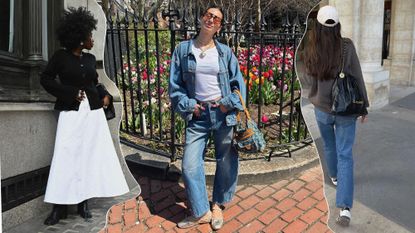Just How to Style Eastern Wear Pakistan Clothes for Contemporary Style
Just How to Style Eastern Wear Pakistan Clothes for Contemporary Style
Blog Article
Introducing the Rich Heritage of Eastern Style
Checking out the elaborate tapestry of Eastern fashion introduces a world where practice satisfies advancement, and craftsmanship links with social meaning. From the opulent silks of ancient dynasties to the intricate needlework of nomadic tribes, each garment narrates that goes beyond time and borders, echoing the abundant heritage and artistic heritage of the East. As we peel back the layers of history and practice, a remarkable trip awaits, unraveling the tricks behind the captivating allure and long-lasting impact of Eastern style on the global phase.
Beginning of Eastern Style

In Mesopotamia, for instance, the Sumerians and Babylonians created garments making use of woollen, natural leather, and linen, decorated with intricate patterns and precious jewelry. Old Egyptians are renowned for their sophisticated weaving skills and using light-weight, breathable textiles like bed linen. Chinese style stressed the significance of shade importance and intricate needlework techniques, while Indian garments included lively colors, lavish fabrics like silk and cotton, and elaborate drape styles such as the saree.
These old human beings not just influenced each various other yet likewise led the way for the diverse and culturally abundant tapestry that is modern Eastern fashion. With centuries of evolution, Eastern fashion continues to flourish, blending practice with modern-day impacts to create special and classic designs.
Social Impacts and Customs
Attracting from centuries-old custom-mades and beliefs, cultural influences and practices play a critical duty fit the significance of Eastern fashion (eastern wear pakistan). The rich tapestry of cultures throughout Eastern regions such as Asia, the Center East, and Africa has actually heavily affected the apparel styles, colors, materials, and makes that prevail in Eastern fashion today
In nations like India, Japan, and China, traditional garments like kimonos, sarees, and cheongsams proceed to hold substantial cultural importance and are usually adorned with intricate embroidery or symbolic patterns that show deep-rooted beliefs and values. In Middle Eastern countries, the streaming abayas and kaftans put on by guys and ladies not just serve as moderate outfit however additionally mirror the region's social heritage and Islamic customs.
Additionally, the use of details colors like red permanently luck in Chinese society or detailed geometric patterns motivated by Islamic design even more exhibit how social influences show up in Eastern fashion - eastern wear pakistan. By recognizing and protecting these social impacts and traditions, Eastern fashion remains to advance while staying true to its abundant heritage
Development of Eastern Apparel
With time, Eastern garments have actually undertaken substantial makeovers, showing a blend of practice and modernity in their style and style. Typical Eastern garments such as the saree, salwar, hanbok, and robe kameez have advanced to include contemporary aspects while protecting their social essence.
One significant evolution is the use of ingenious fabrics and methods in Eastern garment construction. Standard handwoven fabrics like silk and cotton have been enhanced with contemporary materials look at here now such as polyester and blends, offering enhanced sturdiness and ease of care. Furthermore, innovations in printing innovations have enabled elaborate patterns and designs to be included into Eastern garments with precision and detail.
Moreover, adjustments in shape and customizing have actually modernized Eastern outfit, making them a lot more flexible and appropriate for varied celebrations. Standard dress codes have kicked back, permitting experimentation with decorations, styles, and colors. This development has not just made Eastern garments a lot more available and attractive to a global target market but has likewise ensured their continued significance in modern fashion landscapes.
Symbolism in Eastern Clothing
Exploring the deep-rooted social significance woven right into Eastern clothes reveals a rich tapestry of meaning and practice. Eastern garments are often imbued with symbols that reflect the wearer's societal standing, religions, and cultural identity. In lots of Eastern cultures, the color red represents luck and success, making it a preferred option for wedding event attire. Likewise, detailed needlework patterns can communicate stories of mythology or stand for true blessings for the user.
In addition, specific garments hold symbolic meanings. Its layout, textile, and even you can check here the means it is used all carry deep cultural importance.

Influence of Eastern Fashion Today

The consolidation of Eastern aspects in Western style has actually led to a combination of designs that cater to diverse tastes and preferences (eastern wear pakistan). Designers commonly attract motivation from Eastern materials, patterns, and shapes, developing one-of-a-kind and cutting-edge items that blend traditional and modern visual appeals. This you can find out more cross-cultural exchange has not only renewed the style sector yet likewise promoted a deeper appreciation for Eastern heritage and workmanship
Additionally, the rise of social media and electronic systems has actually additionally enhanced the impact of Eastern style, enabling brand names and designers to get to a bigger target market and showcase their social heritage to the globe. Through cooperations, style shows, and online projects, Eastern fashion proceeds to progress and flourish in today's interconnected and vibrant worldwide landscape.
Conclusion
Finally, the rich heritage of Eastern style is a testament to the cultural impacts, elaborate workmanship, and profound symbolism installed in each garment. From ancient people to modern-day analyses, Eastern style proceeds to captivate with its special blend of custom and development. The influence of Eastern fashion today functions as a pointer of the classic beauty and imaginative expression that have made it an international phenomenon commemorated for its rich social heritage.
Exploring the intricate tapestry of Eastern fashion introduces a world where practice meets technology, and craftsmanship links with cultural meaning.The enduring significance and social importance installed in Eastern clothes proceed to form and influence the contemporary influence of Eastern fashion today. Eastern style has gone beyond boundaries, becoming a worldwide sensation welcomed by developers, celebrities, and fashion enthusiasts worldwide.In final thought, the abundant heritage of Eastern style is a testimony to the social impacts, intricate craftsmanship, and profound significance installed in each garment. The effect of Eastern style today offers as a suggestion of the classic elegance and artistic expression that have made it a global phenomenon celebrated for its rich cultural heritage.
Report this page